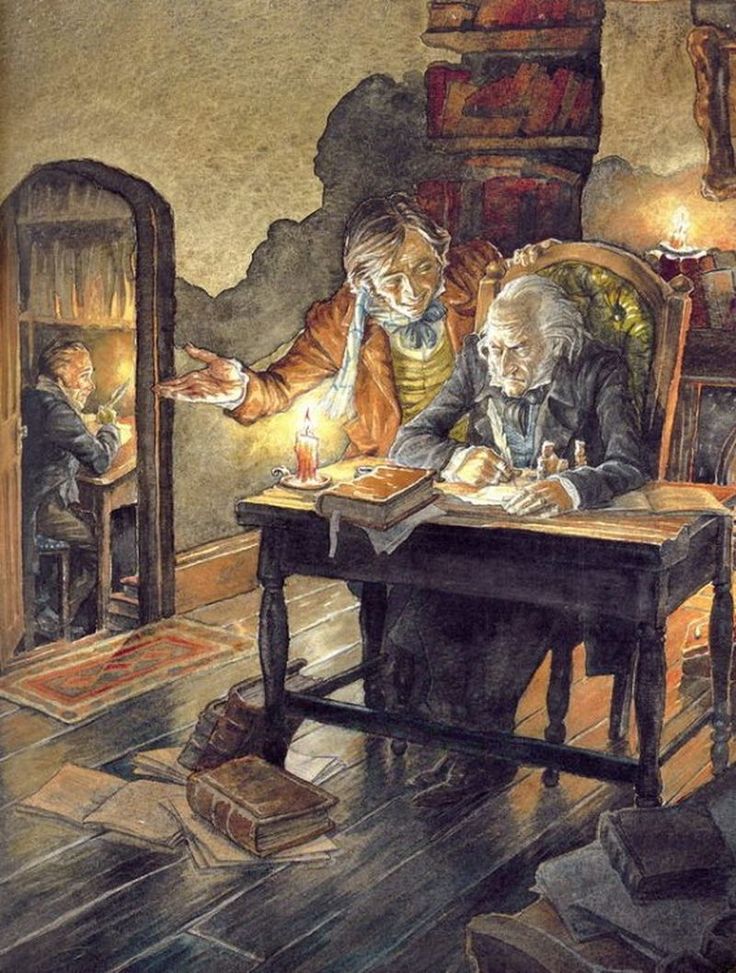Fighting the Unseen Enemy

In 1918, a world entrenched by war was also being consumed by an invisible battle: the Spanish flu. Though the virus began circulating the globe in spring of 1918, it would only be mere months before the sickness began stealing the lives of Minnesotans. Over two years, the deadly epidemic would claim the lives of 7,620 Minnesotans according to a Minnpost article, and alter the course of history with the state’s future response to the 2020 COVID pandemic. A comparison of Minnesota’s response to both pandemics a century apart reveals similarities and differences regarding the decisive use of legislative power, mandated healthcare precautions and guidelines over the individual rights of citizens.
The death toll for Minnesota would be ranked 48 out of 50 states for one of the lowest U.S. mortality rates during the Spanish flu according to research done by Williams College and California State University. Yet, in 2020, research from Statistica shows that Minnesota’s mortality rate has hovered around 24 out of 50 states. In 1918, Minnesota’s death rate hovered at 0.06 percent, while in 2020 the death rate hovered at 0.02 percent. Despite the statewide gap in the number of cases between the two pandemics, Minnesota’s different responses in the two pandemics kept both death rates well below one percent.
A difference between Minnesota’s response to the Spanish flu and COVID were the individuals who regulated statewide ordinances. During the Spanish flu, the Minneapolis health commissioners had the final say on Minneapolis’ citywide health lid that shut down the city from October through December of 1918. With COVID, final decisions about stay-at-home orders were in the hands of Gov. Walz. This difference between state decision makers affected the degrees of statewide bans on public gatherings. In fact, masks and stay-in-place orders were not mandated by the state of Minnesota during the Spanish flu. In 1918, the Nov. 2 article entitled “Speed Grip Fight” by the St. Paul Pioneer Press recounted that the Citizens’ Committee even rejected a mask-wearing ordinance. Although masks were recommended for doctors, nurses, patients and visitors of Minnesota hospitals, civilians began wearing them too according to the Oct. 2 article “Influenza Spread Held Slight here” by The Minneapolis Star Tribune. During the Spanish flu, closing down the city was seen as a last resort because of the effect it would have on the economy and fighting World War I. Nevertheless, it was seen as a necessary measure to prevent widespread illness and death.
On Oct 12, 1918, the article “City Closed to End Wave of Influenza” by The Minneapolis Star Tribune announced that Minneapolis health commissioners had put a health lid on the city in order to prevent the Spanish flu from spreading further. The stipulations of the health lid required indefinite closures of schools, theatres, churches, dance halls and pool halls. Documentation from the Influenza Encyclopedia stated the ban was not lifted until Dec. 15, 1918, when city officials realized that they could not enforce the order anymore because they lacked the funds to do so. Within the Oct. 15, 1918, Minneapolis Star Tribune article “Business Hours May be Changed to Curb Epidemic” the Secretary of the State Board of Health Dr. H.M. Bracken said, “If you ask me to close up Minneapolis, I’ll do it, but you may as well be prepared to hibernate like a bear.” 102 years later this statement has rung true for many Minnesotans facing the 2020 COVID pandemic.
The COVID pandemic shut down the city of Minneapolis and took the health lid one step further with the addition of a stay-in-place order. On March 27, 2020, Gov. Walz issued executive order 20-20 designed to slow the spread of COVID. These preparations were designed to “flatten the curve” and give Minnesota time to refine their healthcare industry to handle the pandemic. Gov. Walz said, “These are trying times. But we are Minnesotans. We see challenges—and we tackle them. No matter how daunting the challenge; no matter how dark the times; Minnesota has always risen up—by coming together. If we unite as One Minnesota, we will save lives.” Following COVID’s arrival in Minnesota, the entire state was sent into hibernation as the seasons changed from spring to summer, and summer to autumn.
The Oct. 12, 1918, Minneapolis health lid also included the closures of schools. To prevent confusion over closures, city health commissioners closed schools indefinitely with the intention of opening them up as soon as they could. Though Minnesota schools ended up closing two times within three months, their total closures only equaled 56 days according to the research article “Lessons Learned from the 1918–1919 Influenza Pandemic in Minneapolis and St. Paul, Minnesota.” However, some health commissioners disagreed with the decision to shut schools down since children were not the main age group affected by influenza.
Dr. B. F. Simon believed that schools could remain open because Minnesota school nurses had been allocated to help detect and treat cases. In the Minneapolis Morning Tribute article “150 Cases of influenza in Minneapolis,” Dr. H.M. Bracken said, “You shut up your schools when you have trained teachers and nurses ready to keep watch of the children, detect symptoms of disease and take proper steps to prevent its spread.” However, in the Oct. 9 Minneapolis Morning Tribute article “Influenza Gains Among Civilians,” health commissioner Dr. H.M. Guilford disagreed with Bracken noting that there were only 30 school nurses allocated for the 50,000 school-aged children in Minnesota.
Likewise, Gov. Walz issued executive order 20-02 on March 15, 2020, that closed down places of education from kindergartens to high schools across Minnesota in order to prevent the spread of COVID. For Minneapolis students, school closures have been ongoing since March 17 and students are still engaging in distance learning. Currently, Minneapolis schools have been shut down for over 230 days. Fortunately enough, some Minnesota students were still able to keep up with their assigned homework through distance learning and modern technology. However, distance learning has not proved beneficial for all parties involved. An article by Minnpost reported on how the lack of internet connection has caused a learning curve for rural Minnesota students. In another article by Minnpost, many Minnesota students have found distance learning to be difficult due to the lack of social interaction or also because of learning disabilities.
The way the virus spreads has been the focal point for how the responses to these pandemics have differed. The Oklahoma Medical Research Foundation stated that COVID’s asymptomatic feature coupled with modern transportation was the main reason behind why the 2020 virus spread from China to Minnesota in only four months. But in 1918, although individuals travelled the world through a multitude of vehicles, the Spanish flu was mainly spread by soldiers returning home from overseas or army camps in the U.S. After seven months of the Spanish flu’s reign of terror in Europe, it transferred to soldiers that returned back to their Minnesota homes. On Sept. 30, only a week after Minnesota reported zero cases, the Minneapolis Morning Tribute recounted 108 cases of the Spanish flu among the soldiers at Fort Snelling hospital in the article “150 Cases of Influenza in Minneapolis.” As the spread among the soldiers slowly declined, the spread to Minnesota civilians quickly gained ground.
When the 1918 Spanish flu spread began infiltrating the civilian population, the Oct. 9 article by the Minneapolis Morning Tribute “Influenza Gains Among Civilians” quoted that health officials started recommending social distancing practices alongside keeping windows open to circulate fresh air. Though these practices sound familiar for Minnesota individuals living through the COVID pandemic, though mask wearing was not mandatory during the 1918 pandemic for Minnesotans. After Gov. Walz executive order 20-81 on July 25, Minnesota residents were required to wear masks inside all private indoor businesses and public outdoor places. But in 1918, neither Gov. Joseph A.A. Burnquist nor Minneapolis health officials issued a mask mandate.
An article by Kare 11 recounted that though the decision to wear masks during the 1918 pandemic was encouraged by health officials, it was ultimately left to individual choice.Despite the lack of a mandate, many Minnesota residents still wore homemade masks while attending their workplace, or going shopping. The Winona Daily News published an article on Oct. 17, 1918, titled “Wear Cheese Cloth Mask” which summarized the use of cheesecloth masks among hospital staff and influenza patients. Instructions on how to make cheesecloth masks were also included within the article.
Another difference between the two pandemics existed in how the Minnesota economy was affected. While the Spanish flu affected the economy because of mortality rates, COVID affected the economy because of business closures. Although Minnesota had one of the lowest mortality rates for U.S. states during the Spanish flu, the pandemic left a hole in the economy because most individuals who died from influenza were working at the time according to research done by the Centre for Economic Policy Research. Men and women ages 15 to 44 had the highest mortality rate among all the ages affected in 1918. During the Spanish flu, private businesses in Minnesota were allowed to stay open because the likeliness of infection in those places was significantly less.
Contrasted to the 2020 pandemic, the Minnesota economy was not as affected by COVID deaths as it was affected by business shutdowns. Because consumer spending drives nearly 70 percent of the economy in Minnesota, the shut downs would prove crippling to small businesses and large corporations alike. When Gov. Walz issued the executive order that shut down nonessential businesses, there were 70,000 individuals who claimed unemployment. But in April of 2020 when stay-at-home orders were issued, 399,767 individuals claimed unemployment causing a 470 percent increase. Though many Minnesota businesses were required to close, they were eligible to apply for disaster relief loans through executive order 20-15, but the revenue lost during multiple months of closures would cause permanent shut downs for Minneapolis restaurants such as Sleepy V’s, Bar Luchador, Ginger Hop and many others.
The last major difference between the 1918 Spanish flu pandemic and the 2020 COVID pandemic was the advancement of technology. During the COVID pandemic, Minnesotans were able to get multiple updates a day from social media and the Minnesota department of health website. Not only did social media provide local statistics, but international reports about the pandemic as well.
At the time of the 1918 pandemic, the newspaper, telephone, telegraph and some radio were the sole source of relaying messages. Before the Spanish flu came to Minnesota, individuals were only able to read about the Spanish flu from a few sources in print that had day old statistics. The newspaper was the main source for Minnesotans to learn about new rules and regulations. A 2007 study published by the National Institutes of Health said, “Postal workers, Boy Scouts, and teachers were enlisted to provide educational materials to the public and to teach health precautions. Mail carriers distributed educational materials on their routes. Boy Scouts distributed posters to stores, offices, and factories in downtown Minneapolis.”
The timeline of the first 30 days of the Spanish flu’s influence on Minnesota would be the most crucial. On Sept. 20, 1918, in a Minneapolis Morning Tribune article titled “No Spanish Influenza in City, Says Guildford” it was reported that Rupert Blue, the surgeon general of the United States Public Health Service, asked Dr. C. E. Smith Jr., assistant executive officer of the Minnesota State Board of Health, if influenza had reached Minneapolis. “No report of epidemic influenza or even a single case has been received in Minnesota,” said Dr. C. E. Smith Jr.
At this point, precautionary measures were limited to public service announcements about avoiding other sick people, not sharing food or drinks, and ultimately being cautious of sneezing or coughing in public. Minnesota Health Commissioner Dr. H. M. Guilford concluded that no quarantine would be necessary if the Spanish flu reached Minneapolis. In the same Sept. 20 article Guilford said, “Spanish influenza does not exist in Minneapolis and never has, but it probably will reach here during the fall.” Unfortunately, Guilford was right about the oncoming epidemic. Within 10 days, an outbreak would ravage the city of Minneapolis.
With WWI still raging in Europe, news about the Spanish flu did not reach Minneapolis front pages until Sept. 29. Between Sept.19 and Sept. 29, 53 cases of influenza showed up in Minnesota. Although limited medical technology existed in 1918, state leaders were quick to educate and assist the public. Bacteriologists isolated a bacillus for the disease, and they linked it to a Minnesota flu epidemic that had occurred in 1891 and 1892. Though state legislatures suspected the illness was coming from soldiers returning from WWI or training camps, their hypothesis was confirmed in less than 24 hours.
On Sept. 30, the Minneapolis Morning Tribute confirmed 150 cases of the Spanish Flu in Minnesota. At the Fort Snelling Hospital alone, there were 108 cases among the soldiers and nurses. Medical authorities tried to contain the Spanish flu at Fort Snelling, but unfortunately it had already reached civilian life. On Oct. 2, in the Minneapolis Morning Tribute article “Spread of Influenza Declared Slight” 55,000 masks were requested by the Northern division of the Red Cross to be distributed in Minnesota hospitals for doctors, nurses and patients. Though there were massive efforts to stop the spread, Minnesota health officials could not catch it fast enough.
On Oct. 6, 1918, Minneapolis health officials held an emergency meeting to address the state of the Minnesota epidemic which was not released to the public until Oct. 7 in the article “50 New Influenza Cases Reported Here” by the Minneapolis Morning Tribute. The Minnesota health officials who attended this meeting included Dr. H.M. Bracken, secretary of the state board of health, Dr. H.M. Guildford, the Minneapolis health commissioner and Dr. B.F. Simon, the St. Paul health commissioner.
During the meeting, J.T. Gerould, acting manager of the Northern division of the Red Cross said, “It is in the highest degree important, both from the standpoint of the welfare of the civil and military population, and because the epidemic is likely to interfere with our ability to meet the strain of the war, that the disease should not be allowed to gain headway and that it should be stamped out as quickly as possible.”
The result of this meeting was all individuals in hospitals were required to wear masks, and in addition influenza patients were also required to stay in the hospital an extra five days. Any individuals in Minneapolis who were returning from a possible infection site were encouraged to isolate in their own houses for a week, and Minneapolis was encouraged to limit or prevent social gatherings.
As soon as Minneapolis health officials tried to rein in the virus, the influenza spike attacked Minneapolis. On Oct. 10, influenza calls were being received every 5 minutes at Minneapolis General Hospital. Finally, Minnesota health officials decided to pull out all stops to fight the epidemic. On Oct. 12, the St. Paul Pioneer Press announced the Minneapolis health lid in the article “Mill City Closed.” Within the article the board said, “By the department of health of the City of Minneapolis that whereas the disease commonly known as Spanish influenza has become and is epidemic in the city of Minneapolis and is dangerous to the health of the citizens of Minneapolis as well.”
Three days later, on Oct. 15, Minneapolis had 1,865 total cases and 20 deaths within 48 hours. However, not all health officials agreed with the health lid. Dr. Bracken expressed his concerns of inconsistencies within the closures within the Oct. 15 Minneapolis Morning Star article “Work Hour Change for City Proposed.” He said, “People go to church once a week for an hour, say. (sic) Churches are not overcrowded and the air in them is good. What happens weekdays! Red Cross workers assemble in church parlors and stay for hours in close conditions. If you are consistent, you would stop the Red Cross work, too.” By Oct. 19, nearly a month after no cases had been reported, the Influenza Encyclopedia stated that Minneapolis had reached 3,000 cases of influenza.
Though the Spanish flu had travelled the globe since early spring of 1918, state legislators of Minnesota had little time to prepare when the virus hit during the fall. Likewise, Gov. Walz had mere weeks to prepare for COVID in the early months of 2020. The 1918 pandemic severely affected Minnesota’s ability to train soldiers and fight in WWI, which was partially why the health officials were dead set on containing it.
Even with limited technology in 1918, the Minneapolis health commissioners were able to make concise decisions and alert the public within a day of deciding to impose the health lid. The quick actions of the Minnesotan leadership in both pandemics proved to save countless lives and prepare for future outbreaks. 102 years apart, Minnesotans learned to fight against life threatening viruses by using simple methods like mask wearing and limiting social contact.
Comparing Two Pandemics 102 Years Apart





